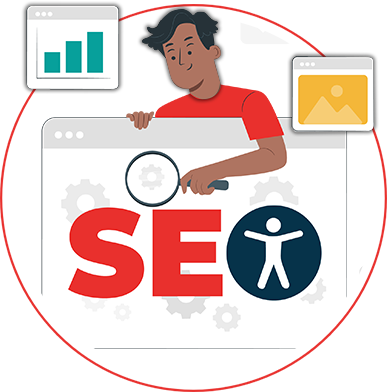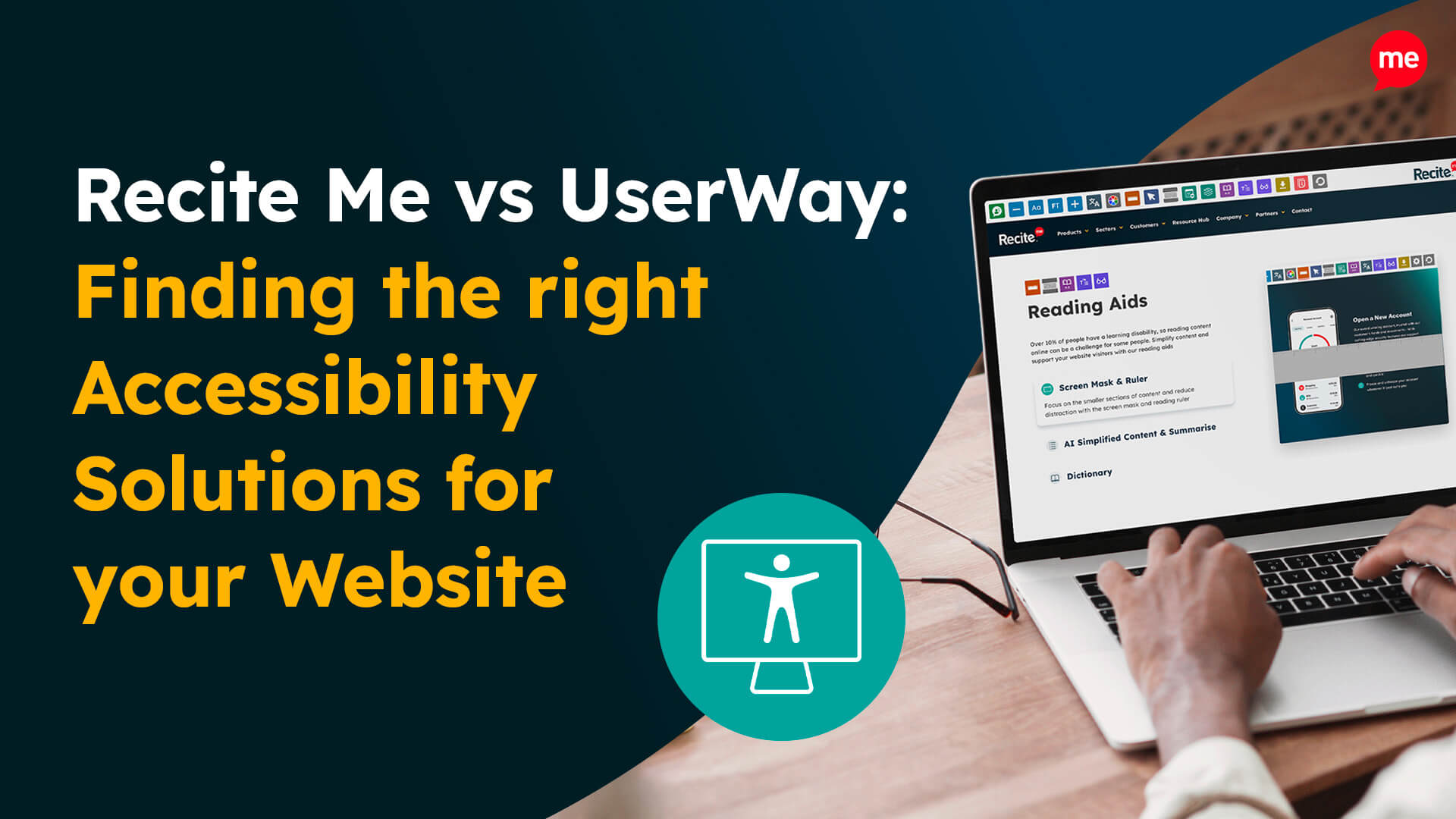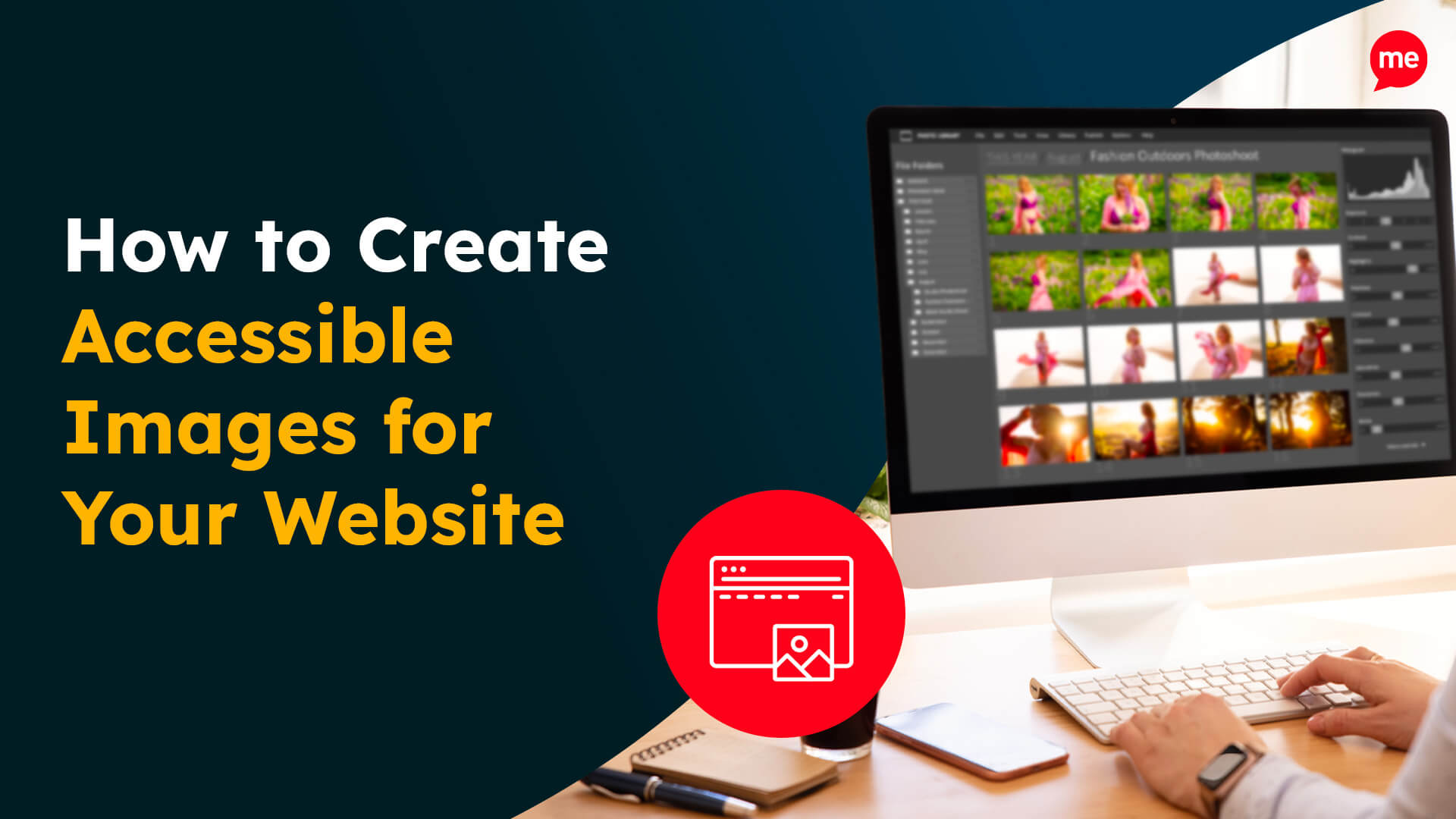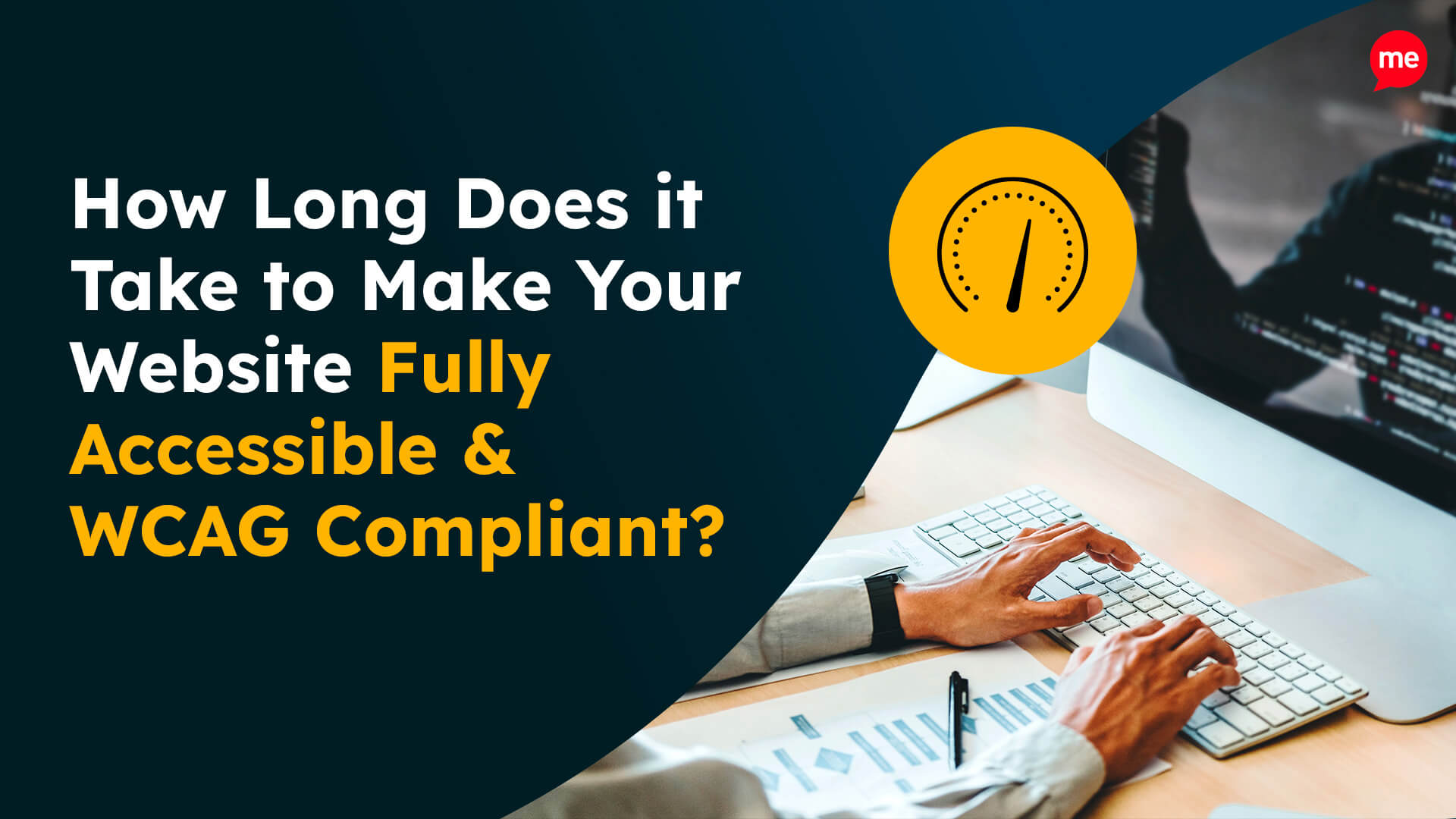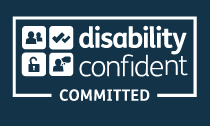Get Your Free Accessibility & Inclusion Toolkit
Download NowWebsite accessibility needs are becoming increasingly important. For businesses it represents a big opportunity to increase brand image and reputation, but also increase their reach, with more customers able to use their websites effectively. For consumers it’s just as important, with around 15% living with a disability globally. This highlights a huge proportion of the population who would otherwise not be able to access many websites, without these accessibility tools and features.
Does Accessibility affect Search Engine Optimisation?
Accessibility and SEO are usually mutually beneficial to each other. If you make strides to improve your website’s accessibility then you’ll usually see an SEO improvement. Likewise, optimising different on-page SEO elements will likely help to improve your accessibility.
An example of this from the web accessibility guidelines perspective would be improving navigation for disabled users. This would likely result in an improved user experience, with lower bounce rates, signaling to Google and other search engines that your website and content is good.
From the SEO perspective, you’d want to keep your headings in a hierarchical structure, with the inclusion of relevant keywords for each section. One result of this would be an improvement in your accessibility score, as optimised headings provide screen reader users a strong structure for the page content. Which also provides the screen reader technology with an understandable overview of the page and the different sections found in it.
Is Accessibility a ranking factor in Search Engines?
No, accessibility is not a direct SEO ranking factor. However, by making your website more accessible, you will usually indirectly improve your website’s SEO. While Google and other search engines do not state it as a ranking factor, there is often a lot of overlap between the two.
How Accessible Websites can get an SEO Boost
Below is a list of different website elements that can boost the SEO performance of your website if optimised for accessibility.
1. Page Titles
Page titles play an important role for web accessibility and SEO. They are the text displayed in the browser’s page title name bar and are often used as the clickable link in search engine results pages (SERPs).
They provide accessibility for individuals who use screen readers or other assistive technologies to access the web. By providing descriptive and concise page titles, this makes it easier for these users to navigate and understand your website’s structure. Clear page titles help users with disabilities locate relevant information quickly and efficiently.
This improves your SEO as search engine algorithms analyse page titles to determine the relevance and context of a webpage’s content. By optimising your page titles with relevant keywords and accurate descriptions, you increase the chances of search engines properly indexing and ranking your website for relevant search queries.
Well-crafted page titles can attract more organic traffic and improve your website’s visibility in SERPs.
There is also an additional benefit to click-through rates, as properly optimised page titles should entice users to click on your website in the search results. This can help improve your search engine rankings, in Google, as the search engine knows users are more likely to click through to your page.
2. Image Alt Text
Similarly to anchor text, image alt text is important for highlighting context and meaning. Although, for alt text, it specifically refers to images on a web page.
From an accessibility perspective, descriptive alternative text for images is very important. As it allows users with low vision or visual impairments to understand the full context provided by images. Assistive technologies such as screen readers are used to read the alt text of images and provide this context to the user.
In terms of SEO, this is beneficial in a similar way, but for a different audience. As the image alt text is read by search engine crawlers and used as a means of providing the context of the image and helps search engines understand how it relates to the page. Use of various keywords in the image alt tags can be beneficial as it highlights their relevance to the page, in turn increasing organic rankings for those related terms.
Learn more about how to create accessible image alt text here.
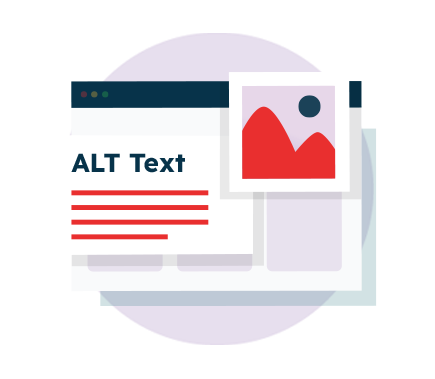
3. Headings
The use of headings in content provides structure and organisation of web content, making it easy for all users to navigate web pages, including those with disabilities.
Screen reader accessibility and assistive technology software will allow users with visual impairments to navigate the page easily. Providing the headings are structured in a hierarchical format, from h1 to h2 to h3 and so on.
Descriptive headings are useful as they give the reader an overview of what is to come in the next body of text. But, they’re also useful for telling search engines what the section and entire page is about. The use of relevant keywords in headings is a key ranking factor in SEO, so focusing on this can see a big boost in your ranking performance.
4. Descriptive Anchor Text
Anchor text is important for accessibility as it immediately highlights the context of the page being linked, providing the anchor text is descriptive. For example, an anchor text referencing “best protein powder” that links to a page specifically about protein powder is good for accessibility. On the other hand, an anchor text that reads as “click me” “click here” “read more” is generally bad for accessibility, as it doesn’t provide enough descriptive information about where the link will lead to.
This same logic can then be applied to SEO, as the anchor text highlights exactly what the page is about to Google. Using specific keywords in your anchor text will increase your probability of ranking the target page in google for the desired keyword.
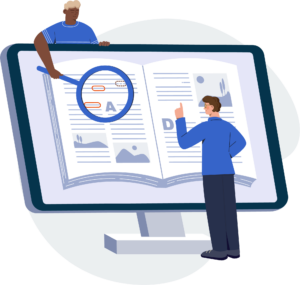
5. Readability
Readable text is a highly significant accessibility factor, as it affects the ability of users to understand and comprehend the content on a website.
Webmasters should consider how clear and legible text is to read for all users. This includes a number of different factors such as font type, font size and font colours. Additionally, the average reading age of the text should be around nine years old, this makes information available to individuals with learning or reading disabilities.
Readability is one of many direct ranking factors in Google and other search engines. So, it’s important to create content that is easy to digest. Additionally, there are some indirect effects that readability provides SEO, in the way of increasing time spent on the website, lowering bounce rates, improving user experience, enhancing social sharing and more. All of these factors play their role in improving the visibility of a website in the search engine result pages.
6. Accessible Website Design
Creating an accessible website design promotes inclusivity by allowing people with disabilities full access to the website and all of its content. Removing specific barriers to information and services, allowing users with visual, cognitive, motor and auditory impairments to use the web effectively. Websites focused on accessibility generally have higher levels of user experience and engagement, as they’re available to more people.
For SEO, this idea of user experience is important, as it improves key metrics for website visitors such as Bounce Rate, Time on Site, Pages per Session and many more. These metrics are all useful performance indicators for search engines such as Google. As it helps to provide a basis for how useful the website was in meeting the needs of its visitors. If the website has a good standing with the search engine for these related metrics, then it can help to boost organic search rankings.
7. Audio and Video Transcripts
Written transcripts of audio and video-based content are very important when it comes to improving web accessibility.
The first instance of this is the benefit it provides to deaf and hard of hearing users, who wouldn’t have otherwise been able to access the information and content. Additionally, written transcripts can be beneficial for users with cognitive disabilities, who find audio and video difficult to process. Some of these users may benefit more from having a written transcript that enables them time to comprehend the information at their own pace. Another accessibility benefit is the ability to translate the written transcripts into various different languages, allowing users to read along in their native language.
Written transcripts also provide a boost to SEO performance, in most instances. As search engines are unable to make sense or interpret audio and video content. The transcript provides text-based content that can be crawled, indexed and ranked. This increases your visibility in google and other search engines.
8. Mobile-friendly design
An adaptive and responsive mobile web design benefits all users, not just those with disabilities. However, for disabled users, responsive web design is important to allow the use of their various assistive technologies. Additionally, accessible mobile designs will address important touch-friendly features such as larger buttons, spacious tap targets and intuitive navigation. This can make it considerably easier for users with motor disabilities or dexterity issues to access and interact with web content.
The SEO benefits again all come down to the increased user experience metrics. Creating the idea that your website provides a lot of value to its consumers.
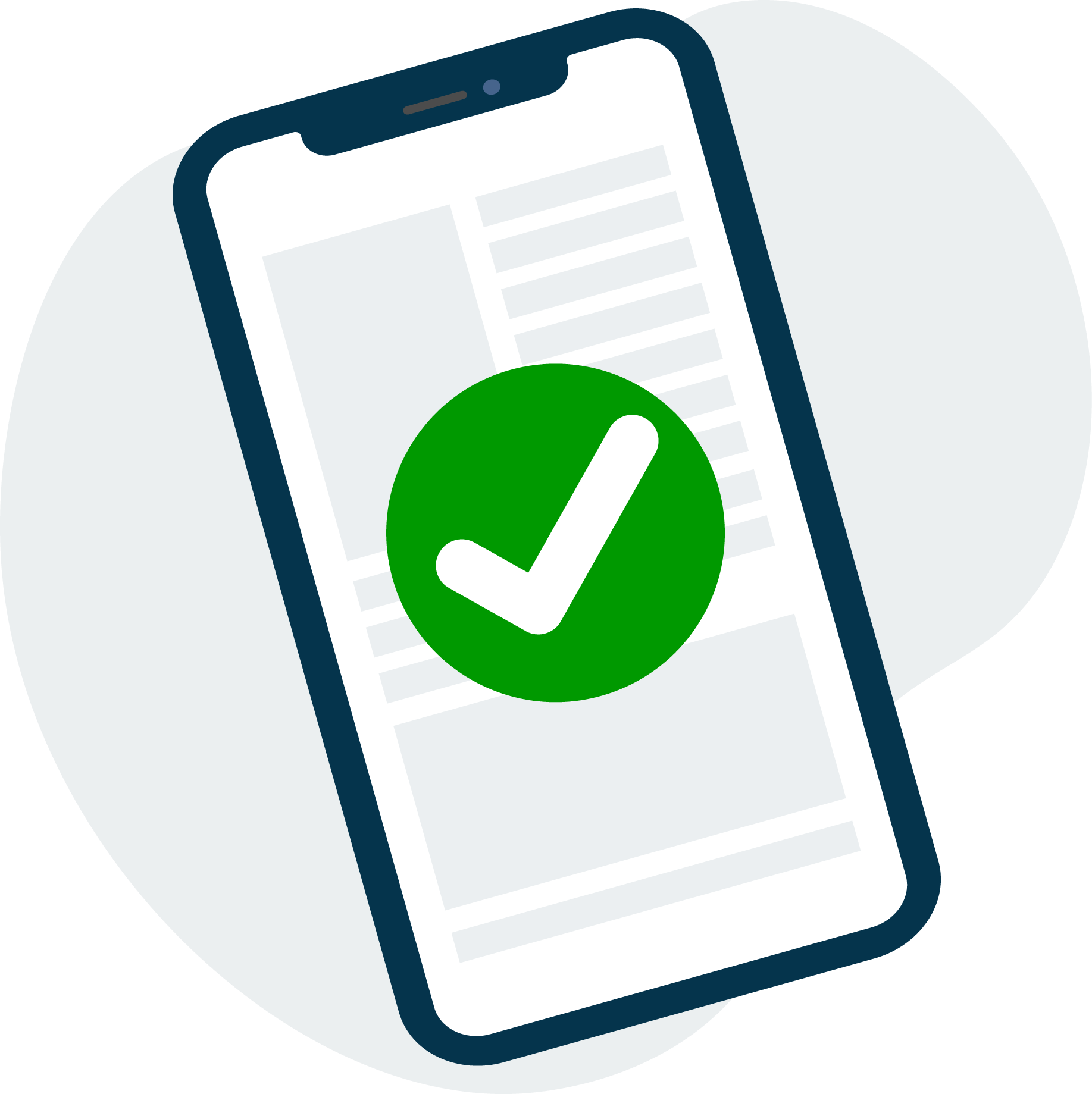
Anticipating future updates
Google and other search engines have been around for well over two decades now. If we’ve learnt anything it’s that they are constantly evolving and updating their ranking factors and procedures. So, it’s always best to stay ahead of the curve and be considering what the next big change could be.
We already know that Google looks at a number of different core web vitals relating to site speed and load times. So, it wouldn’t be crazy to assume they might start doing something similar with website accessibility. Effectively grading each website based on its accessibility and using this as another ranking factor. Website owners who’ve already prepared for this and made their websites accessible would get a head start and likely experience a big SEO uplift.
Our 40-page Digital Accessibility & Inclusion Toolkit helps businesses break down online barriers and make a real impact. It offers practical advice on all aspects of digital accessibility, from writing an accessibility statement to accessible website tips and inclusive hiring.
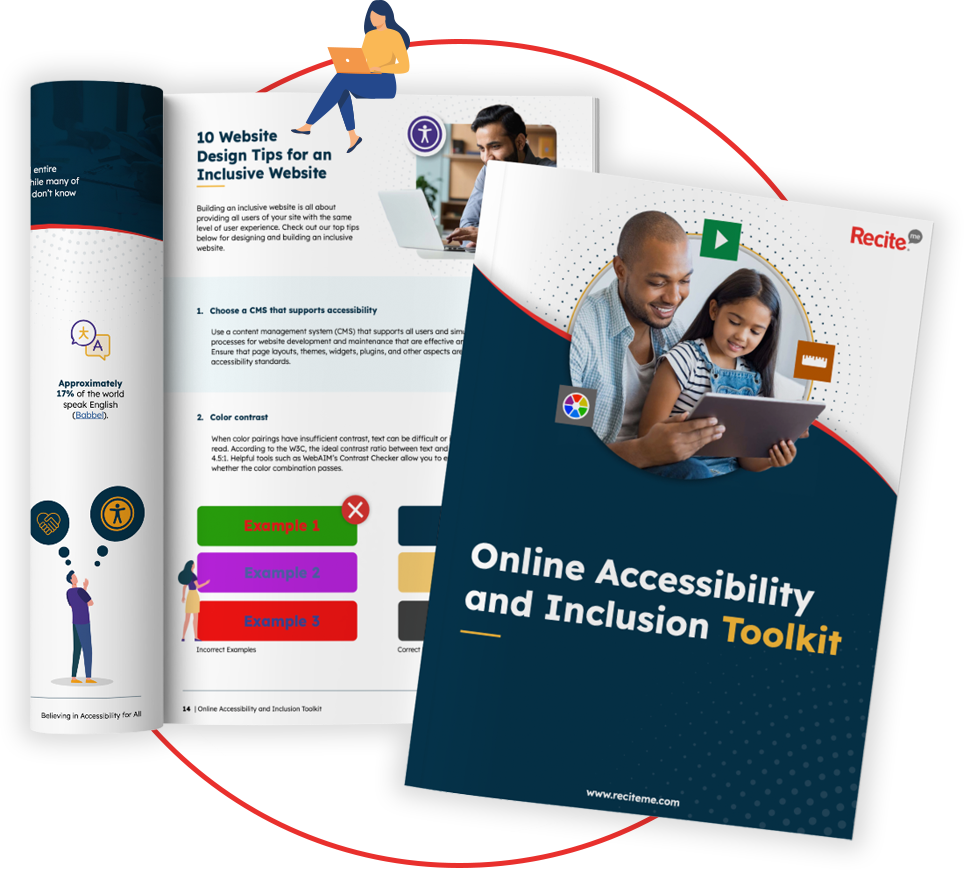
Creating Website Accessibility
At Recite Me we’re committed to all things accessibility. With the help from our two core products, the accessibility scanner and assistive toolbar, you can build a more accessible website.
Accessibility Checker
Our website accessibility checker is the perfect solution for highlighting any accessibility issues. The tool works by running a scan of your website, notifying you of the issues and making suggestions on how to solve them. The results can all be downloaded and shared with friends or colleagues, tracking your journey to accessibility. Some of the main benefits include:
- Identifies non-compliance.
- Display accessibility issues.
- Provides improvement suggestions.
- Manage your fix queue.
- Track improvements.
- Share your accessibility report.
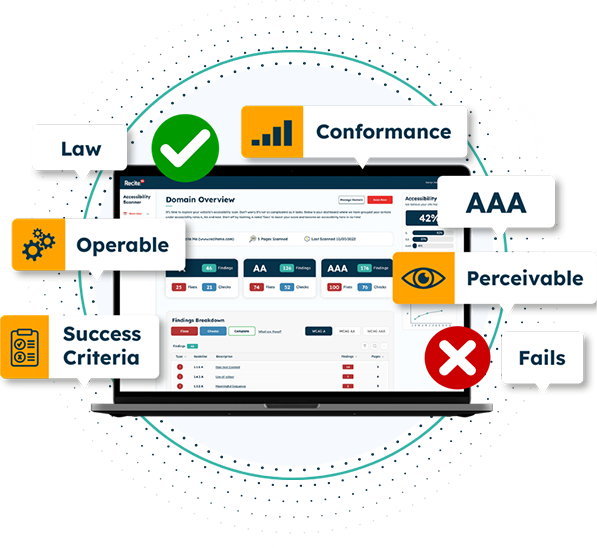
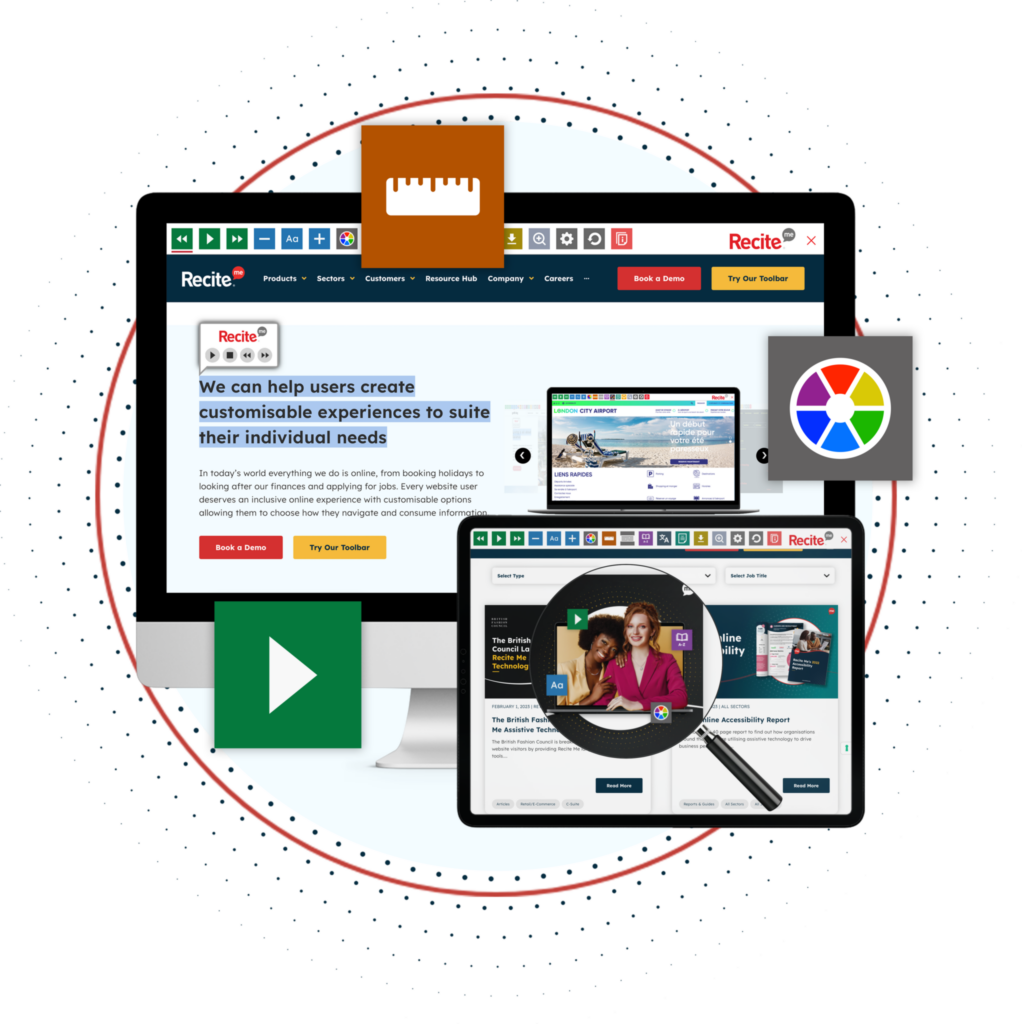
Assistive Toolbar
Implementing the Recite Me assistive toolbar on your website can significantly improve the user experience for individuals who have certain disabilities. The toolbar provides users with the ability to make adjustments and alterations to your website. Some of the main features include:
- Ability to change font type, colour and size.
- Alter the colour contrasts between background and text.
- Mask Screen Tool to isolate sections of the page.
- Recite Me Ruler.
- Download web content as an mp3 file as an alternative to reading.
- Translate text to over 100 languages.
- Text-to-speech with our screen reader.
- Screen read and/or translate PDF documents.
- Zoom in and out of any page.
- Spell-checker, integrated dictionary and thesaurus.
Start Your Digital Inclusion Journey
Our team is here to help you on your mission to provide more inclusive online experiences. Get started on your online inclusion strategy today by trying our toolbar or scheduling a free demonstration to see the difference it can make to your business.

